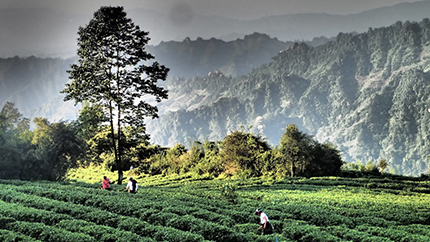Extracting the best from green tea

Green tea (Camellia sinensis) is one of nature’s true wonders. Rich in healthy polyphenols and catechins, as well as natural caffeine, it delivers clinically proven health benefits in several areas, including heart health, weight management, digestive health, alertness, stress reduction and skincare. It is a popular ingredient globally in dietary supplements, hot and cold beverages, and beauty products. But despite its popularity, it has become clear that not all green tea leaf extracts are equal. In fact, there is worrying evidence that raw materials are making their way into the supply chain – and into consumers’ shopping baskets – that do not meet the high purity standards supplement companies and their customers expect.
Naturex takes traceability, transparency and trust very seriously, and has implemented the Green Tea Pathfinder project to provide a framework for implementing this 360° approach. Naturex’s green tea extract is grown on a single 235-hectare plantation in Sichuan province in southwestern China, in full accordance with Good Agricultural & Collection Practices (GACP) and to standards that are organic-like. No pesticides are used – unusual in today’s green tea production industry, where herbicides and fungicides are widely applied to crops. The plantation is located in the mountains, far from any pollution. All of these factors foster richer biodiversity, securing the production of the raw material for years to come.
The green tea extract is produced less than 60 miles from the field to keep the tea ultra-fresh and to simplify supply chain custody. Within the Green Tea Pathfinder Project, Naturex – in partnership with its green tea leaf supplier – has supported a number of environmental and social initiatives. These include a substantial reforestation program, which has seen a total of 350,000 trees planted from 2000 onwards after serious flooding of the Yangtzse river in Sichuan province two years earlier. This had been caused by slope erosion as a result of over-exploitation of the soil, but the reforestation program will help to ensure it doesn’t happen again.
The people who grow and pick our green tea are treated fairly and valued for their contribution. Recently they benefited from a government-led rehousing program. About 1,000 families were relocated close to the plantation, which provides employment with a fair rate of pay in a part of China where there is otherwise little economic opportunity. Investment in education has also been provided, further improving the overall standard of living in the local area. By combining eco-friendly practices with a positive social impact, all stakeholders in the supply chain take pride in their work and their ability to offer robust guarantees on their green tea.